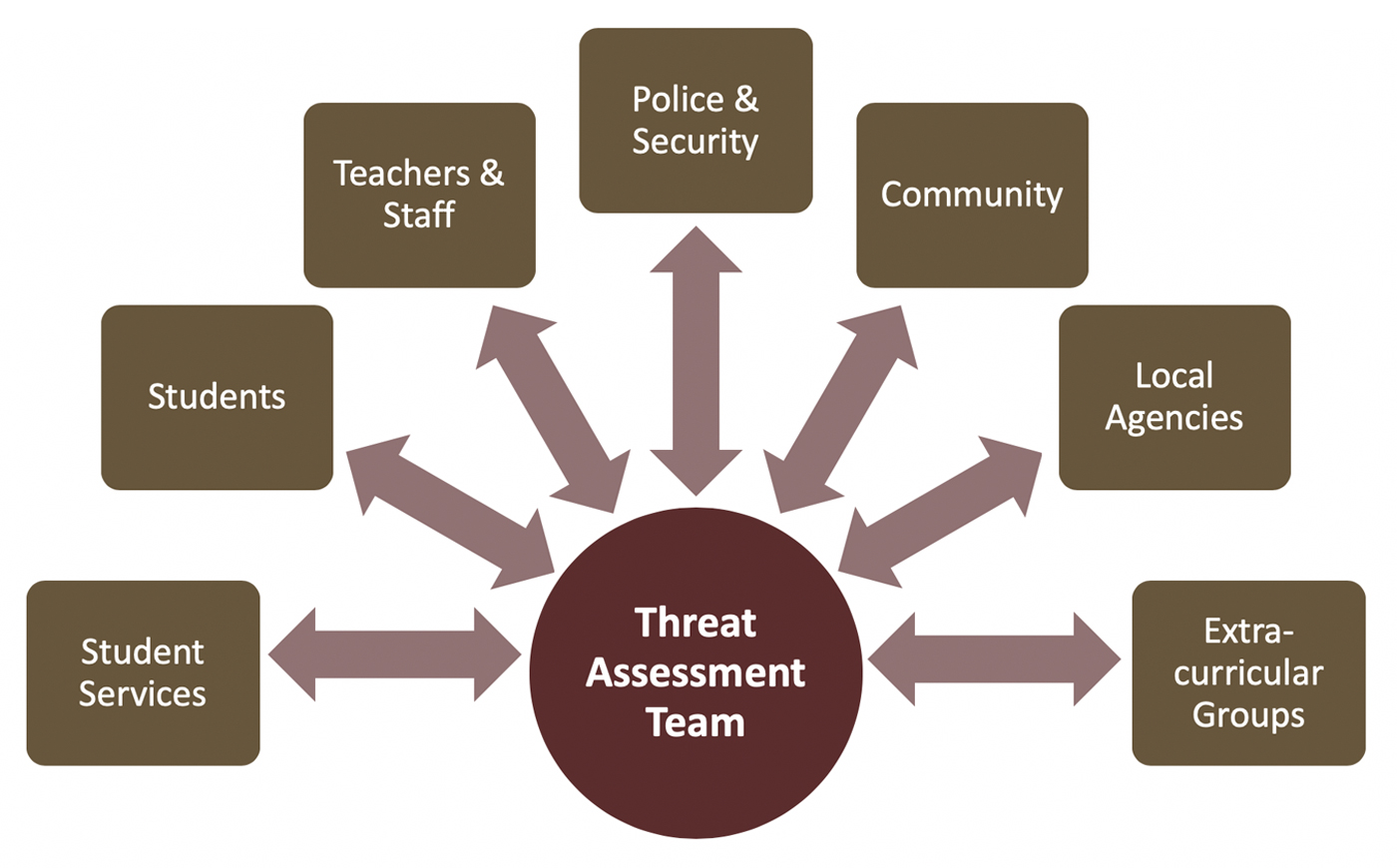TxSSC
School Behavioral Threat Assessment Toolkit
10.0 Encouraging Reporting: Overcoming the Bystander Effect
Identifying persons and situations of concern depends, in large part, upon the willingness and ability of the school community or campus community to overcome the “bystander effect” and report concerns. The “bystander effect” is when someone sees or hears of someone in trouble, or they see a problem, but fail to help, get involved, or intervene because they think someone else will.

To help bystanders be more actively engaged in supporting the safety and well-being of the school, members of the community need to know:
It is everyone’s role and responsibility to share concerns.
Everyone has a role to recognize concerns, respond in a helpful manner, and to report concerns to persons who can best help the situation.What to report.
While there is no one list of THE behaviors that may cause concern, providing examples of concerns that the team can assist with will help community members better recognize, respond, and report concerns appropriately. The documents below, released by the U.S. Department of Homeland Security in November 2019 and March 2021 show some commonalities among individuals plotting and committing acts of targeted school violence:Where (and with whom) to report.
Community members need to know where, how, and with whom they should share concerns. The school needs multiple mechanisms to foster reporting and awareness of concerns. Students in particular need awareness training, in addition to specific instruction and supports, on how to utilize the reporting avenues to get help (i.e., It is not “tattling” or “narking” if they are trying to help someone or keep them safe.).Reports are wanted.
All community members need to know that reports are welcomed, even if the situation is determined not to be a threat.Something will be done.
The school community is more likely to come forward when anonymity is respected, and concerns will be addressed.Regular reminders of issues and process.
Schools can experience great mobility amongst staff and students, thus training and education needs to be ongoing throughout the year.
Guidance on What can be Reported
Any information that is concerning, troubling, or upsetting should be reported to the threat assessment team, administrator, teacher, or tip line. Examples include, but are not limited to:
- Threatening statements, gestures, and/or artistic impressions.
- Bullying and cyberbullying.
- Persons with ongoing, unresolved grievances with member of the school community.
- Unusual or bizarre communications or behavior.
- Information about someone expressing thoughts, plans, or preparations for violence.
- Concerns that someone may harm themselves.
- Behavior that significantly disrupts the learning or working environment.
- Behavior that seems troubling or disturbing.
- Persons seeming isolated and alienated from others.
- Anyone unknown to the school.
- Anything out of the ordinary.
The Bullying Checklist for Schools
The Bullying Checklist for Schools is a tool that can be used to determine whether a situation qualifies as bullying or cyberbullying per Texas law. Equally important, the checklist acts as a conversation starter for threat assessment teams to ensure the team’s multiple expertise have input on the situation being assessed, so that a well-rounded and inclusive intervention plan can be developed and applied, if necessary.
Reporting Sources
The team may consider establishing liaisons with groups outside of school to educate them about the threat assessment team and encourage sharing of concerning information. Be sure to provide access to mechanisms that allow for anonymous reporting.

This diagram shows examples of various sectors and sources of information, in school and outside of school, that may report concerns to the threat assessment team.
Encouraging reporting can be accomplished through various mechanisms such as general awareness training for the entire school, providing multiple ways to report a concern to the team, and notification to parents.

Regular Awareness and Reminders of the Process
Administrators, threat assessment team members, and key gatekeepers should regularly seek opportunities to build awareness of, and engagement with the threat assessment process. Examples of strategies to support this effort include:
School Safety and Reporting Resources for the K-12 Community
The infographic from SchoolSafety.gov presents effective strategies and resources to boost student and school safety through reliable reporting programs. This comprehensive guide offers actionable steps for K-12 schools and districts to implement and sustain reporting systems, creating a supportive environment for students to voice their concerns.